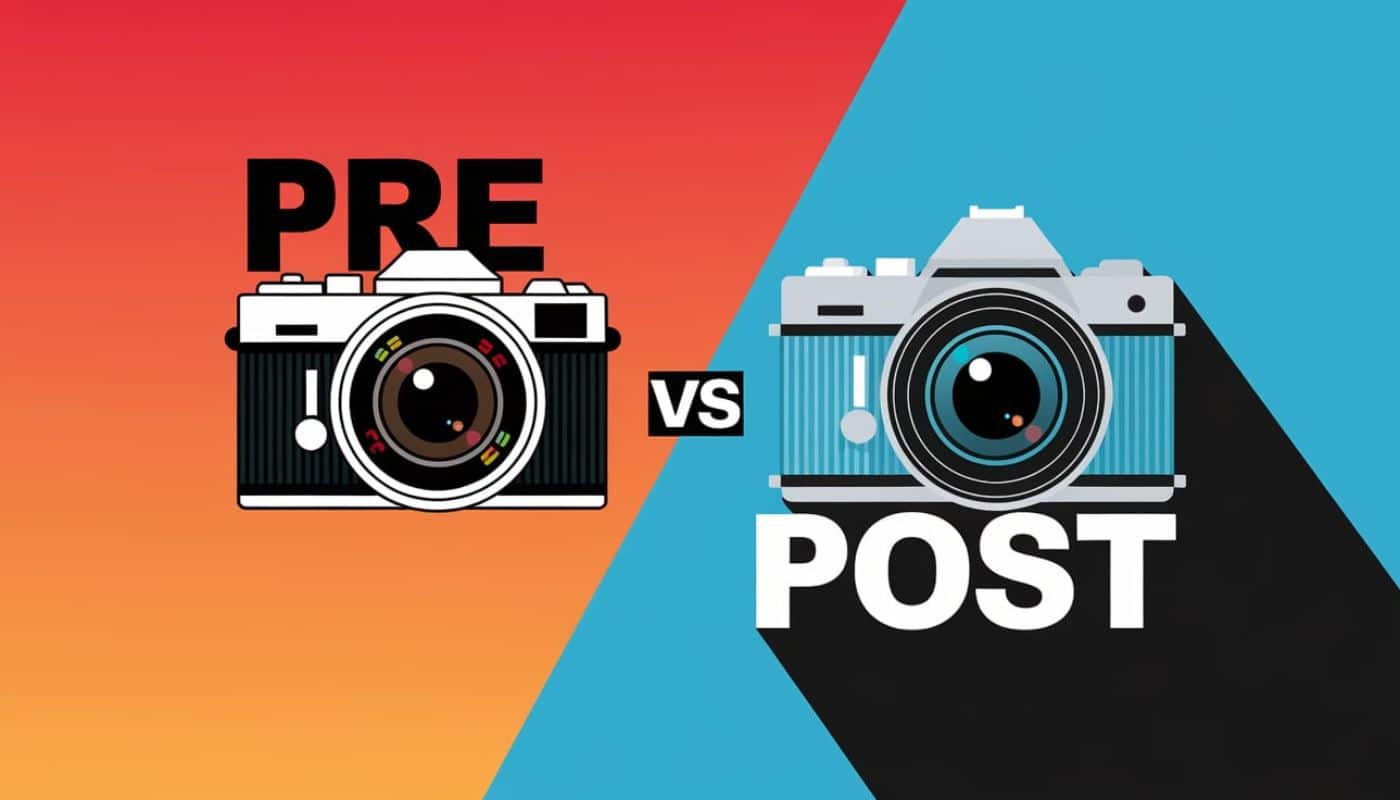Imagine you’re drafting an important email or writing a report, and you pause mid-sentence. Should you write pre-meeting or post-meeting? Does it matter? Absolutely. Prefixes like pre- and post- are small but mighty tools in the English language, and using them correctly can make or break your message. Whether you’re a student, a professional, or a language enthusiast, understanding the nuances of these prefixes is essential for clear and effective communication.
In this article, we’ll dive deep into the world of pre- and post-, exploring their meanings, correct usage, common mistakes, and even their historical origins. By the end, you’ll have a solid grasp of when and how to use these prefixes, ensuring your writing is always polished and precise.
Quick Summary: What Do Pre- and Post- Mean?
Before we get into the nitty-gritty, let’s start with a quick overview:
- Pre-: A prefix meaning “before” (e.g., preview = a view before the main event).
- Post-: A prefix meaning “after” (e.g., postpone = to put something after its original time).
Key Takeaways:
- Pre- refers to something that happens before.
- Post- refers to something that happens after.
- Both prefixes are attached to root words without a space (e.g., prewar, postwar).
- Hyphens are sometimes used for clarity, especially with proper nouns or to avoid confusion (e.g., pre-COVID, post-2020).
Why the Confusion?

At first glance, pre- and post- seem straightforward. However, confusion often arises due to their similar structure and the fact that they’re both used to indicate time. Here are some common reasons for mix-ups:
- Similar Spelling and Pronunciation: Both prefixes start with “p” and end with a hyphen, making them easy to confuse in writing.
- Overlap in Context: Some situations involve both “before” and “after” elements, leading to uncertainty about which prefix to use. For example, is it pre-event preparation or post-event cleanup?
- Hyphenation Rules: Knowing when to use a hyphen can be tricky. For instance, is it preworkout or pre-workout?
Real-world examples highlight these challenges. Consider the phrase pre- and post-operative care. Here, both prefixes are used in the same context, emphasizing the importance of understanding their distinct meanings.
Detailed Explanation & Correct Usage
Let’s break down the proper usage of pre- and post- with examples and practical applications.
1. Pre-: Before in Time or Order
The prefix pre- comes from the Latin word prae, meaning “before.” It’s used to indicate that something occurs before a specific event, time, or action.
Examples:
- Prewar: Refers to the period before a war (e.g., prewar architecture).
- Preview: A viewing or showing before the official release (e.g., movie previews).
- Precaution: A measure taken before something happens to prevent harm (e.g., safety precautions).
Hyphenation Rules:
- Generally, pre- is attached directly to the root word without a hyphen (e.g., prepaid, prenatal).
- Use a hyphen when the root word is a proper noun or to avoid confusion (e.g., pre-Columbian, pre-judgment).
2. Post-: After in Time or Order
The prefix post- comes from the Latin word post, meaning “after.” It’s used to indicate that something occurs after a specific event, time, or action.
Examples:
- Postwar: Refers to the period after a war (e.g., postwar economic boom).
- Postpone: To delay something until after its originally scheduled time (e.g., postpone the meeting).
- Postgraduate: Relating to studies undertaken after completing a degree (e.g., postgraduate research).
Hyphenation Rules:
- Like pre-, post- is usually attached directly to the root word (e.g., postscript, postdate).
- Use a hyphen with proper nouns or to avoid ambiguity (e.g., post-COVID, post-impressionist).
Common Mistakes & How to Avoid Them
Even seasoned writers can stumble when using pre- and post-. Here are some common mistakes and tips to avoid them:
- Confusing Pre- and Post-:
- Incorrect: The post-meeting discussion happened before the event.
- Correct: The pre-meeting discussion happened before the event. Tip: Double-check the timeline. If it’s before, use pre-; if it’s after, use post-.
- Overusing Hyphens:
- Incorrect: The pre-school teacher organized a post-game party.
- Correct: The preschool teacher organized a postgame party. Tip: Only use hyphens with proper nouns or to avoid confusion.
- Misplacing the Prefix:
- Incorrect: The meeting was pre-scheduled after the holiday.
- Correct: The meeting was scheduled before the holiday. Tip: Ensure the prefix aligns with the intended meaning.
Synonyms or Alternatives
While pre- and post- are versatile, sometimes alternative words or phrases can better convey your meaning. Here are some options:
- Instead of Pre-:
- Before: Before the meeting, we reviewed the agenda.
- Prior to: Prior to the event, we set up the venue.
- Instead of Post-:
- After: After the meeting, we discussed next steps.
- Following: Following the event, we sent out a survey.
When to Use Alternatives: If the sentence feels clunky with a prefix, consider rephrasing for clarity and flow.
Examples in Sentences
To solidify your understanding, here are diverse examples of pre- and post- in action:
Formal Usage:
- The pre-trial hearing is scheduled for next week.
- Post-graduation, she plans to travel the world.
Informal Usage:
- Let’s have a pre-game snack before the match.
- Post-vacation blues hit hard after the trip.
Mixed Contexts:
- The pre-COVID era feels like a distant memory.
- Post-2020, many companies shifted to remote work.
Origins & History
The prefixes pre- and post- have rich histories that add depth to their modern usage.
- Pre-: Derived from Latin prae, meaning “before,” this prefix has been used in English since the Middle Ages. It’s a staple in words like predict (to say beforehand) and prevent (to act before something happens).
- Post-: Also from Latin, post means “after.” It entered English during the Renaissance and is found in terms like postscript (a note added after a letter) and posthumous (occurring after death).
These prefixes have stood the test of time, evolving to fit contemporary contexts while retaining their core meanings.
Conclusion & Final Thoughts
Mastering the use of pre- and post- is more than just a grammar exercise—it’s a way to enhance your communication skills. Whether you’re writing an academic paper, a business report, or a casual email, these prefixes help you convey timing and sequence with precision.
Key Takeaways to Remember:
- Pre- means “before”; post- means “after.”
- Attach prefixes directly to root words unless clarity or style requires a hyphen.
- Double-check your usage to avoid common mistakes.
By applying what you’ve learned here, you’ll not only avoid errors but also elevate your writing to a more professional and polished level. So, the next time you’re tempted to write post-meeting when you mean pre-meeting, take a moment to pause and reflect. Your readers will thank you for it.

Emily Hudson, the creative mind behind “English Summa,” is a passionate English language educator with a Bachelor’s Degree in English and a Teaching Certification. Dedicated to making the intricacies of English accessible to learners, Emily brings a blend of expertise and enthusiasm to her readers. Follow English Summa for insightful language tips, literary explorations, and a shared love for the beauty of English.





![# **25 Ways to Say “Have a Good Evening” Professionally** In professional communication, the way you bid farewell can leave a lasting impression. While “Have a good evening” is a polite and common phrase, it can sometimes feel generic or lack the personal touch needed to strengthen relationships. Whether you’re speaking to colleagues, clients, or business partners, tailoring your farewell to the context can demonstrate thoughtfulness, cultural awareness, and professionalism. This article explores **25 professional ways to say “Have a Good Evening”**, complete with real-world scenarios, cultural considerations, and tips to elevate your communication. By the end, you’ll have a toolkit of phrases to suit any professional setting, ensuring your farewells are memorable and meaningful. --- ## **Why Your Farewell Matters** The way you end a conversation or email is more than just a formality—it’s an opportunity to reinforce relationships, express gratitude, and set the tone for future interactions. A well-crafted farewell can: - **Show appreciation**: Acknowledge the time and effort of the person you’re speaking to. - **Reflect professionalism**: Demonstrate your attention to detail and cultural sensitivity. - **Encourage positivity**: Leave the other person feeling valued and respected. In professional settings, the right phrase can enhance your reputation and foster stronger connections. Let’s dive into 25 alternatives to “Have a Good Evening,” each tailored to different contexts. --- ## **25 Professional Ways to Say “Have a Good Evening”** ### **1. Wishing You a Productive Evening** **Scenario**: Email to a Team *“Hi Team, thank you for your hard work today. Wishing you a productive evening as you wrap up your tasks. Let’s regroup tomorrow with fresh energy!”* **Why It Works**: This phrase motivates your team to stay focused while acknowledging their efforts. --- ### **2. Have a Restful Evening** **Scenario**: Closing a Meeting *“Thank you all for your contributions today. Have a restful evening—you’ve earned it!”* **Why It Works**: It emphasizes the importance of recharging, which is especially meaningful after a long day. --- ### **3. Enjoy a Relaxing Evening** **Scenario**: Follow-Up Email to a Client *“Dear [Client’s Name], thank you for your time today. I hope you enjoy a relaxing evening. Looking forward to our next steps!”* **Why It Works**: It conveys warmth and shows you care about their well-being. --- ### **4. Wishing You a Serene Evening** **Scenario**: Email to a Senior Colleague *“Thank you for your guidance today. Wishing you a serene evening ahead.”* **Why It Works**: The word “serene” adds a touch of elegance and calmness, perfect for formal settings. --- ### **5. Here’s to a Gentle Farewell** **Scenario**: Networking Event *“It was a pleasure connecting with you tonight. Here’s to a gentle farewell—until next time!”* **Why It Works**: This phrase is warm and memorable, ideal for informal professional settings. --- ### **6. Wishing You Evening Wishes** **Scenario**: Formal Email Sign-Off *“Thank you for your time today. Wishing you evening wishes as you unwind.”* **Why It Works**: It’s unique and adds a personal touch to your communication. --- ### **7. Enjoy a Well-Deserved Break** **Scenario**: Team Chat After a Busy Week *“Great job this week, everyone! Enjoy a well-deserved break this evening.”* **Why It Works**: It acknowledges hard work and fosters team morale. --- ### **8. Take Care This Evening** **Scenario**: Email to a Colleague *“Thanks for your help today. Take care this evening, and I’ll see you tomorrow!”* **Why It Works**: It’s simple, friendly, and shows genuine concern. --- ### **9. I Hope You Have a Thoughtful Closing** **Scenario**: End-of-Day Recap *“As we wrap up, I hope you have a thoughtful closing to your day. Reflect on your achievements—you’ve done great work!”* **Why It Works**: It encourages mindfulness and self-appreciation. --- ### **10. May Your Evening Be Productive** **Scenario**: Informal Chat with a Colleague *“Before you head out, may your evening be productive! Let’s keep the momentum going.”* **Why It Works**: It’s motivating and keeps the focus on progress. --- ### **11. Here’s to a Positive End to the Day** **Scenario**: Team Meeting Conclusion *“Let’s toast to a positive end to the day! Thank you for your hard work, everyone.”* **Why It Works**: It fosters camaraderie and leaves a lasting impression. --- ### **12. Wishing You a Peaceful Evening** **Scenario**: Email to a Client *“Thank you for your time today. Wishing you a peaceful evening as you review the details.”* **Why It Works**: It’s respectful and creates a calming tone. --- ### **13. May You Enjoy Your Evening** **Scenario**: Closing a Conference Call *“Thank you for your valuable input today. May you enjoy your evening, and let’s touch base again soon!”* **Why It Works**: It leaves a warm impression, encouraging ongoing collaboration. --- ### **14. I Hope You Can Unwind** **Scenario**: Email to a Co-worker *“Thanks for your efforts on the project. I hope you can unwind this evening; you’ve certainly earned it!”* **Why It Works**: It shows empathy and understanding of the need for downtime. --- ### **15. Have a Calm Evening Ahead** **Scenario**: Follow-Up After a Presentation *“Great job today, team! Have a calm evening ahead, and let’s regroup tomorrow to discuss next steps.”* **Why It Works**: It promotes tranquility and sets a positive tone for the following day. --- ### **16. Here’s to a Fulfilling Evening** **Scenario**: Team Building Event *“Thank you for your participation! Here’s to a fulfilling evening with your loved ones. Remember, balance is key!”* **Why It Works**: It reinforces the idea of work-life balance, encouraging employees to value their personal time. --- ### **17. Wishing You Relaxation and Joy** **Scenario**: Informal Email *“Hey Jamie, I wanted to say thanks for your support on the project. Wishing you relaxation and joy this evening! You deserve it.”* **Why It Works**: This friendly approach fosters a positive rapport and acknowledges hard work. --- ### **18. May Your Evening Be Bright** **Scenario**: Casual Goodbyes *“Take care, everyone! May your evening be bright and filled with fun! See you all tomorrow.”* **Why It Works**: It adds a cheerful touch, enhancing workplace relationships. --- ### **19. Hoping You Enjoy a Pleasant Evening** **Scenario**: Formal Email *“Dear Ms. Harris, thank you for your continued support. I hope you enjoy a pleasant evening after a busy day.”* **Why It Works**: It maintains a formal yet warm tone, suitable for professional interactions. --- ### **20. Have a Wonderful Evening Ahead** **Scenario**: Conclusion of a Workshop *“Thank you all for your engagement today. Have a wonderful evening ahead; I look forward to seeing you at our next session!”* **Why It Works**: It encourages ongoing learning and connection. --- ### **21. Here’s to Kind Farewells** **Scenario**: Ending a Client Meeting *“Thank you for your time today. Here’s to kind farewells and a successful partnership moving forward!”* **Why It Works**: It emphasizes mutual respect and the importance of positive relationships in business. --- ### **22. Wishing You a Refreshing Evening** **Scenario**: Email to a Mentor *“Thank you for your advice today. Wishing you a refreshing evening—you’ve inspired me to approach things differently!”* **Why It Works**: It shows gratitude and acknowledges their impact. --- ### **23. May Your Evening Be as Rewarding as Your Day** **Scenario**: Email to a Hardworking Colleague *“Your dedication today was impressive. May your evening be as rewarding as your day!”* **Why It Works**: It’s a creative way to compliment their efforts. --- ### **24. Here’s to a Smooth Transition into Evening** **Scenario**: End of a Busy Workday *“Great work today, everyone. Here’s to a smooth transition into evening—see you tomorrow!”* **Why It Works**: It acknowledges the shift from work to personal time. --- ### **25. Wishing You a Joyful Evening** **Scenario**: Casual Team Chat *“Thanks for the laughs today, team. Wishing you a joyful evening—see you tomorrow!”* **Why It Works**: It’s lighthearted and fosters a positive team culture. --- ## **Cultural and Professional Considerations** When choosing how to say “Have a Good Evening,” consider the following: 1. **Cultural Sensitivity**: In some cultures, overly personal phrases may be seen as intrusive. Stick to neutral, respectful language in formal or cross-cultural settings. 2. **Hierarchy**: When addressing senior colleagues or clients, opt for more formal phrases like “Wishing you a serene evening” or “May your evening be productive.” 3. **Context**: Tailor your farewell to the situation. For example, after a stressful meeting, phrases like “Have a restful evening” or “I hope you can unwind” show empathy. --- ## **Conclusion** The way you say “Have a Good Evening” can significantly impact your professional relationships. By choosing the right phrase for the context, you can leave a positive, lasting impression that reflects your thoughtfulness and professionalism. Whether you’re addressing a team, a client, or a colleague, these 25 alternatives will help you elevate your communication and foster stronger connections. Next time you bid farewell, try one of these phrases and observe how it shapes the tone of your interactions. Remember, a thoughtful goodbye is more than just words—it’s an opportunity to show appreciation, build rapport, and leave a lasting impact.](https://englishsumma.net/wp-content/uploads/2025/02/25-Ways-to-Say-Have-a-Good-Evening-Professionally-In-professional-communication-the-way-you-bid-farewell-can-leave-a-lasting-impression.-While-Have-a-good-evening--150x150.jpg)








